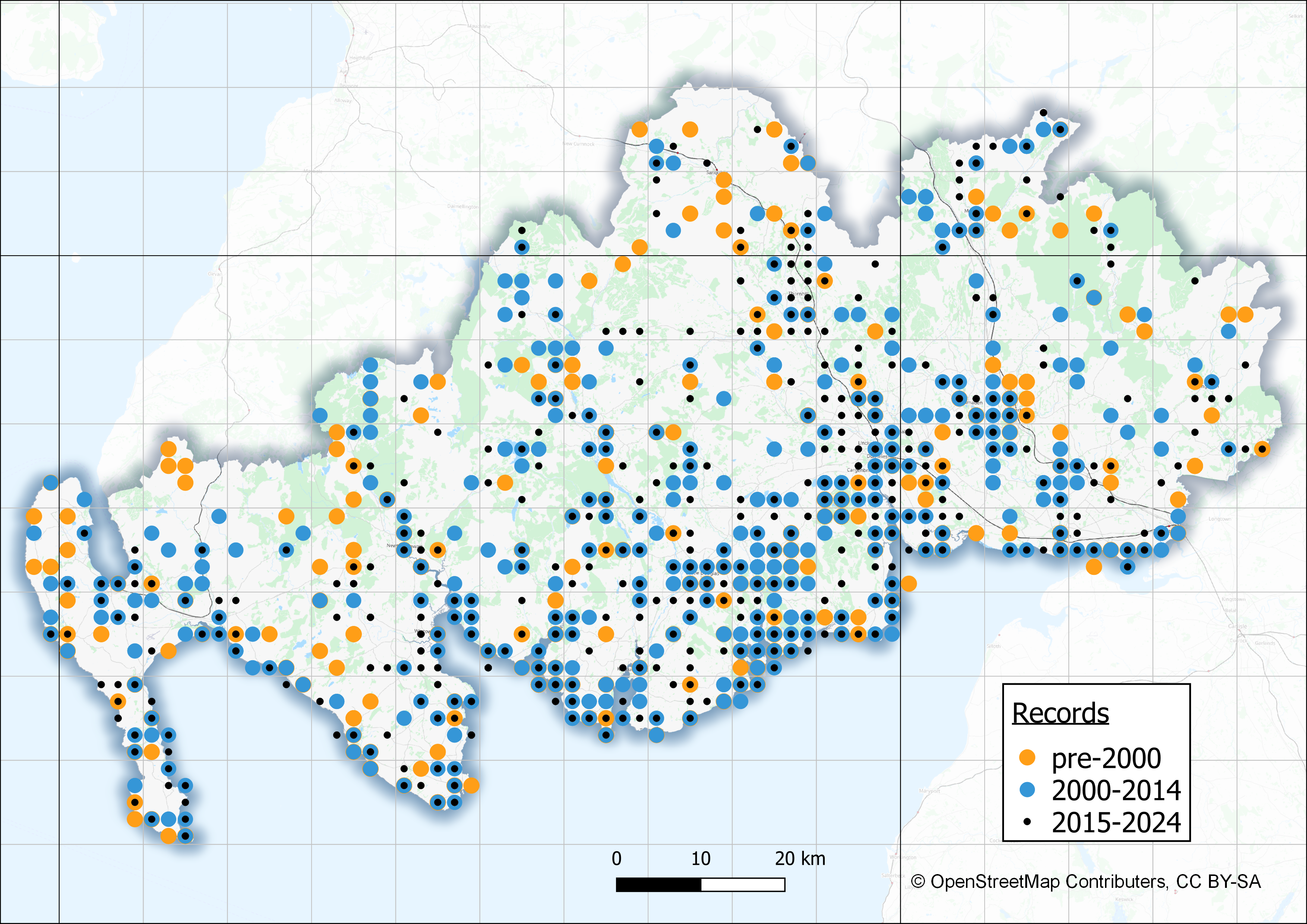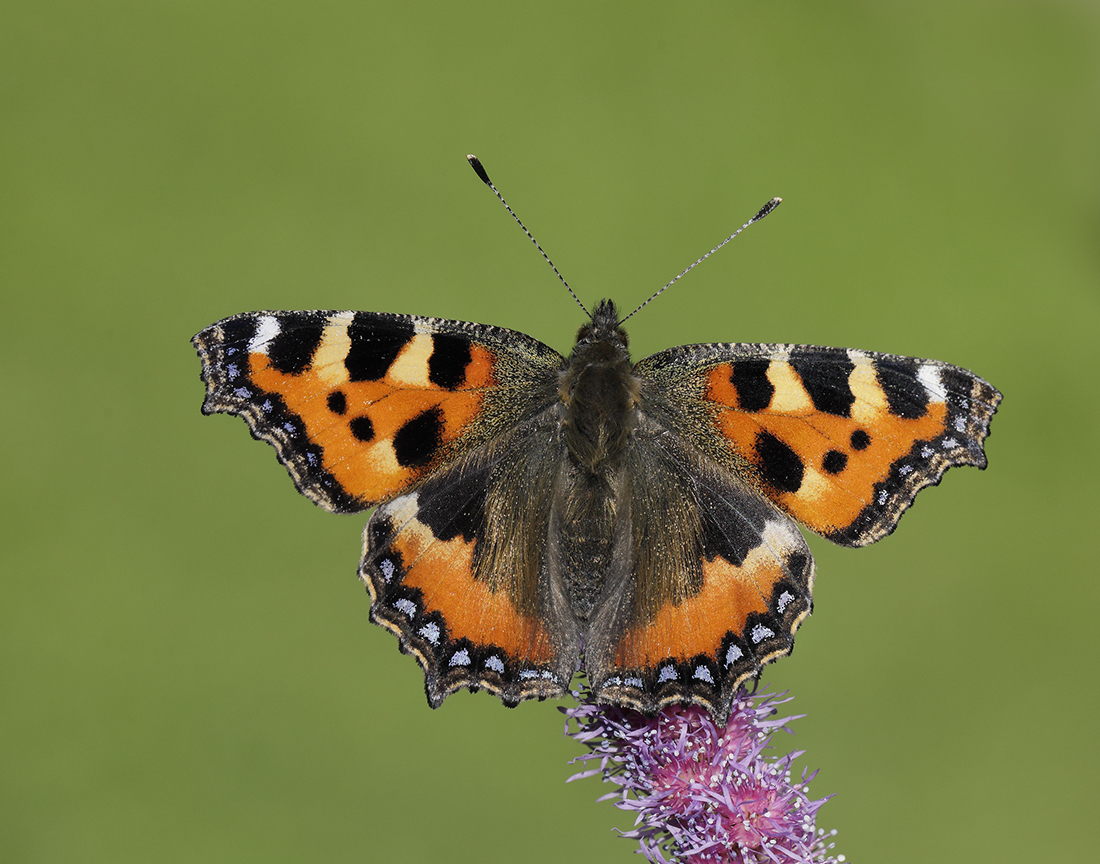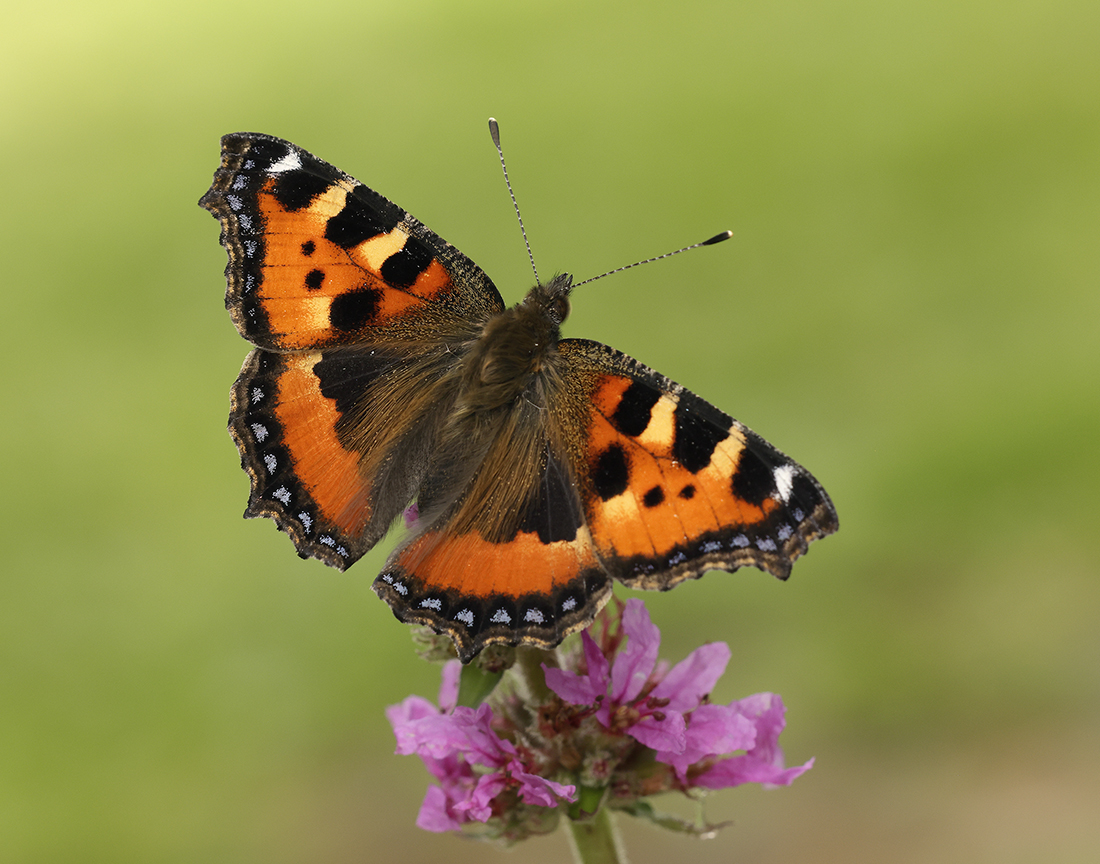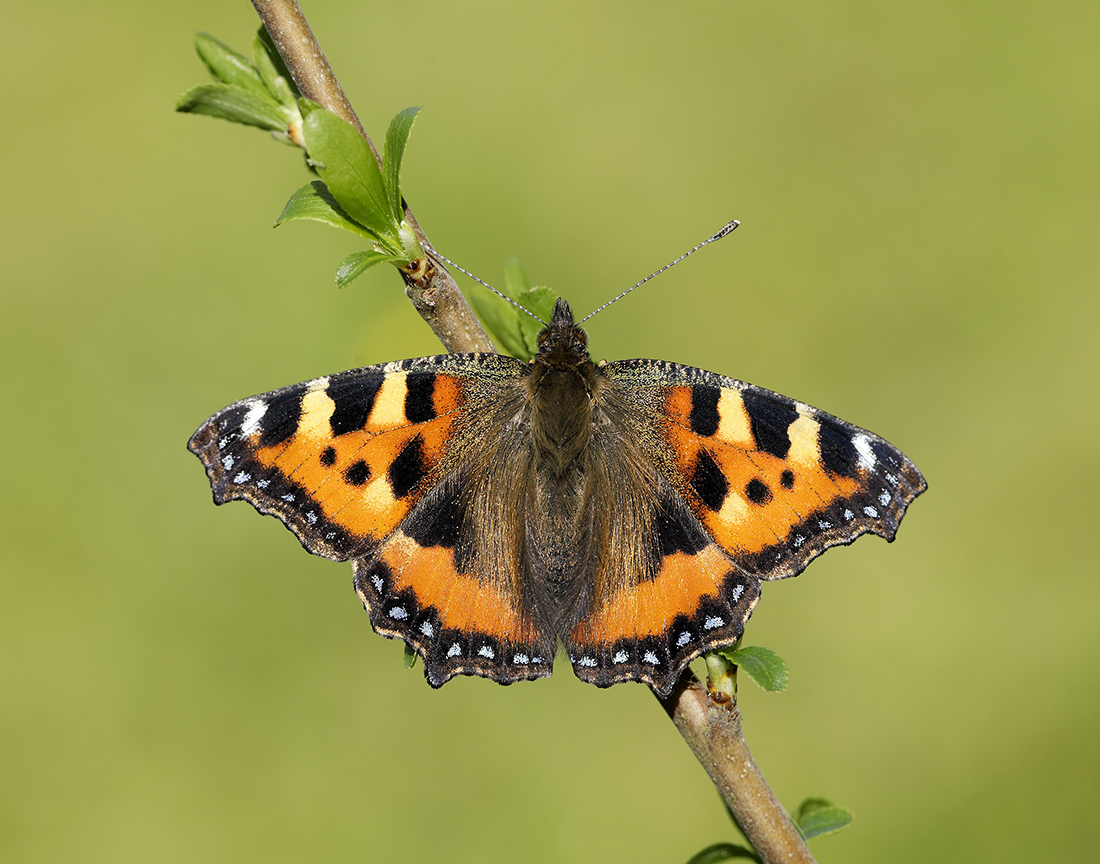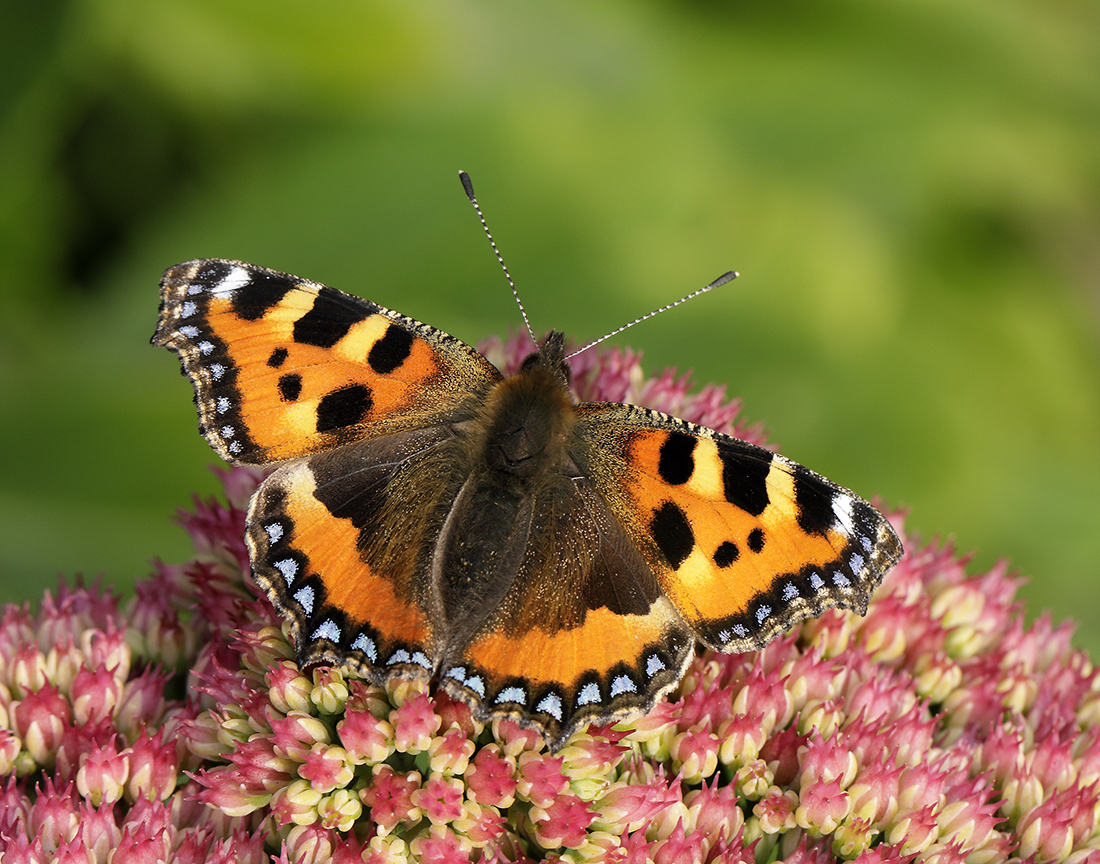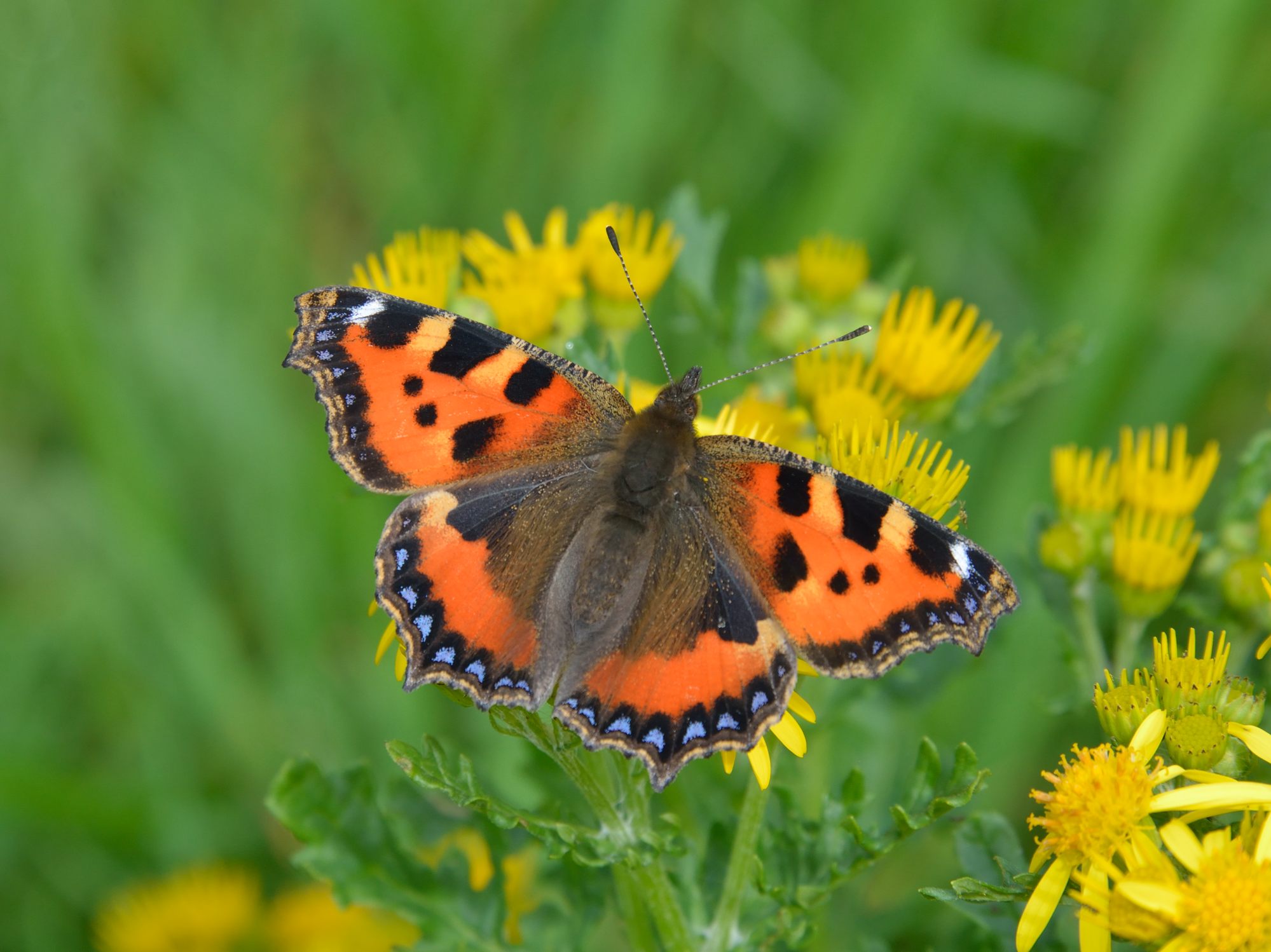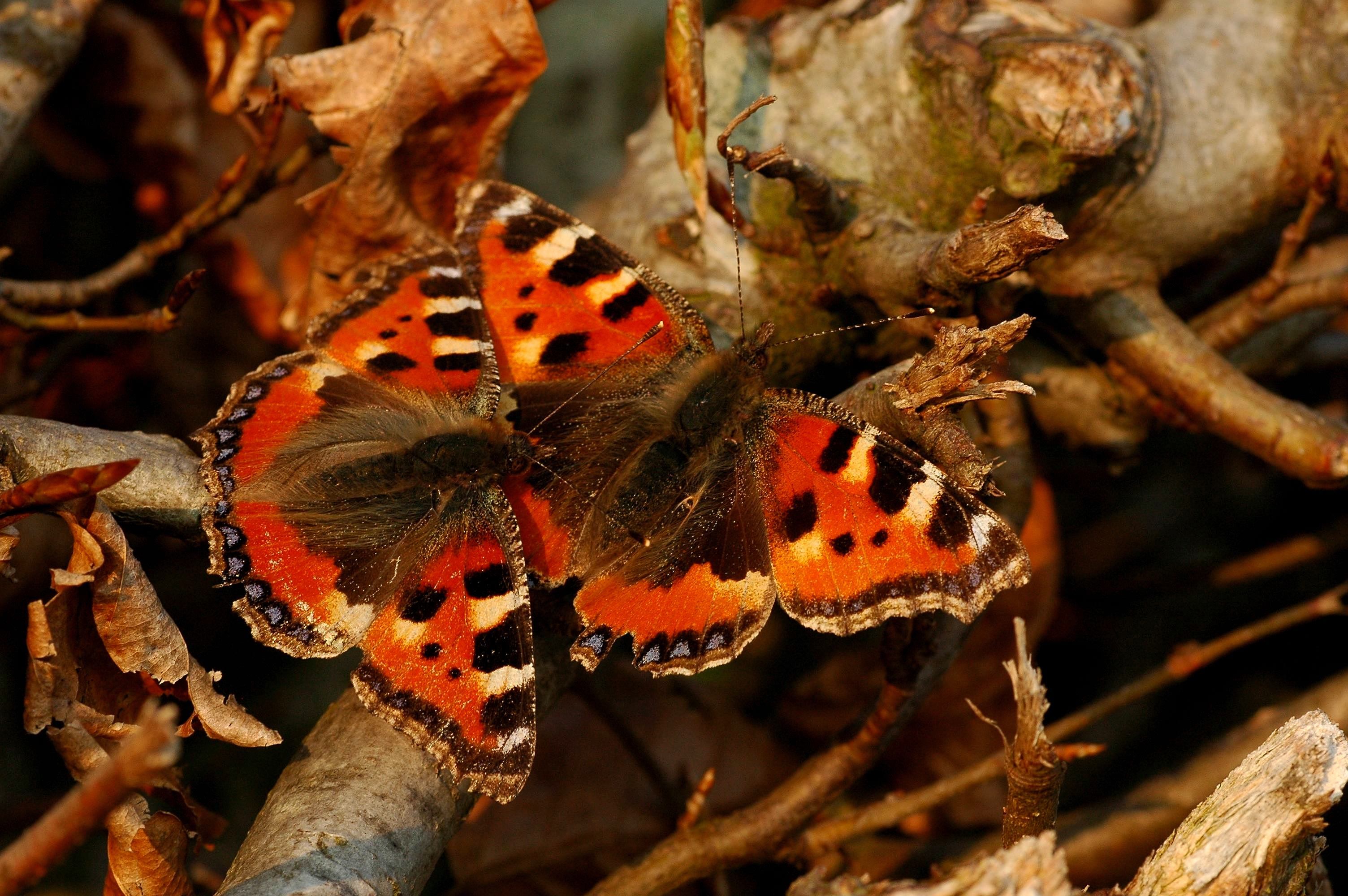The Small Tortoiseshell is found throughout the region, but it is much less abundant than it used to be a couple of decades ago. In southern Britain it has undergone a more serious decline, the causes of which are not understood, but may be related to the warming climate.
Identification
The Small Tortoiseshell is still one of our most recognisable species as it frequents our gardens and parks and can be seen over much of the region. With a good view of its upper wings it cannot be mistaken for any other Scottish species, although in some parts of Scotland it is sometimes misnamed Red Admiral.
Life cycle & flight period
The Small Tortoiseshell is one of the first butterflies to emerge on warm, sunny days in the early spring. On emerging from hibernation in March and April the adults feed on the few nectar sources available, such as Dandelion and Primrose, and pair up.
It has two generations a year but may be seen in almost any month. Numbers peak in early July and again in mid-September and then the adults go into their winter hibernation in caves, garages and houses.
Larval foodplant
The females select healthy stands of Common Nettles in sunny places that sport plenty of fresh leaves upon which to lay their batches of up to 100 eggs. The caterpillars hatch and feed communally in a succession of ever larger silken webs as they develop, until they disperse and spin their own individual webs prior to pupation, either on nettle stems or perhaps a nearby fence post.
Habitats
The bulk of records come from gardens, urban green spaces and field margins but it may also be seen in open woodlands, roadside verges, moorland edges and the uplands.

